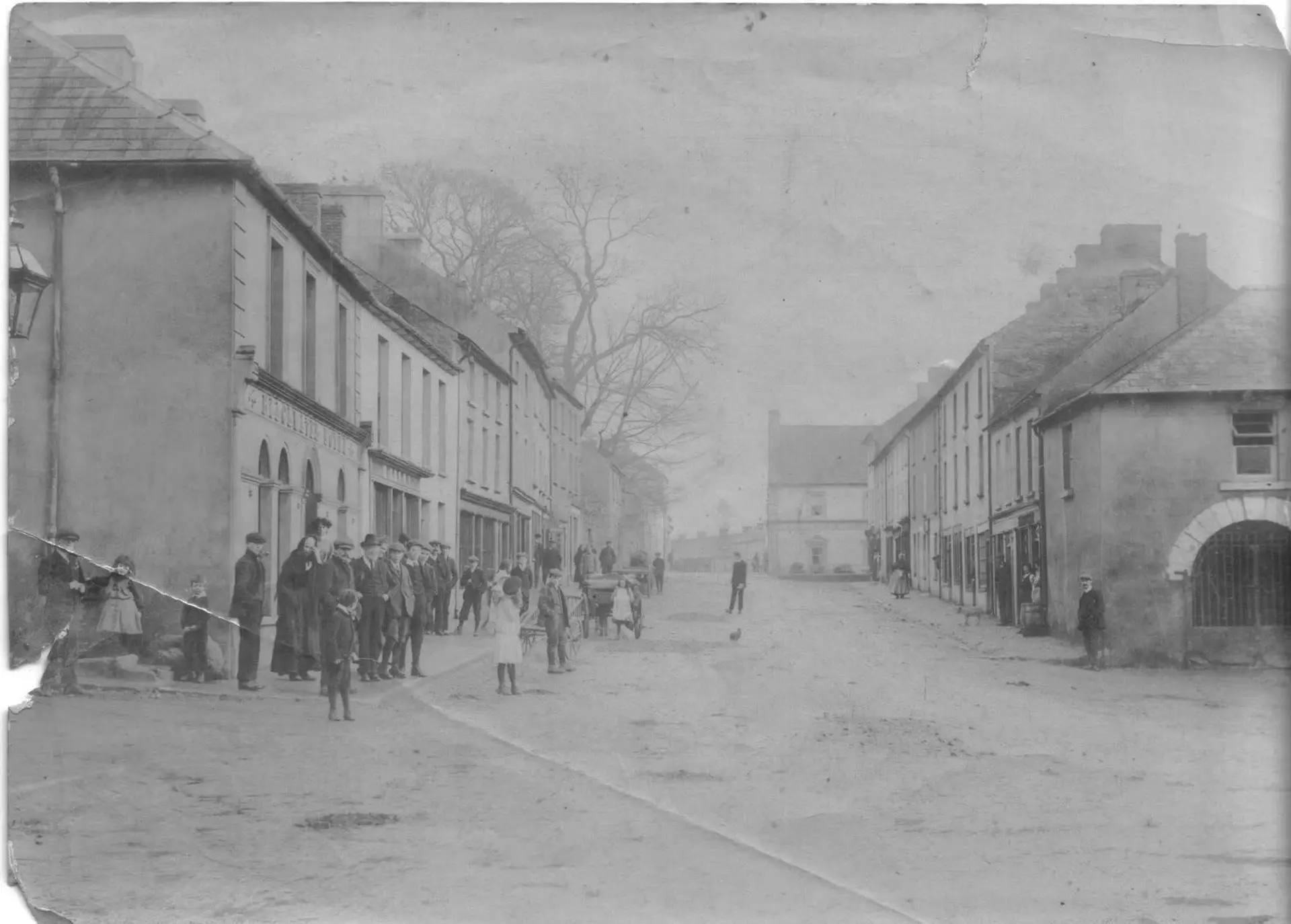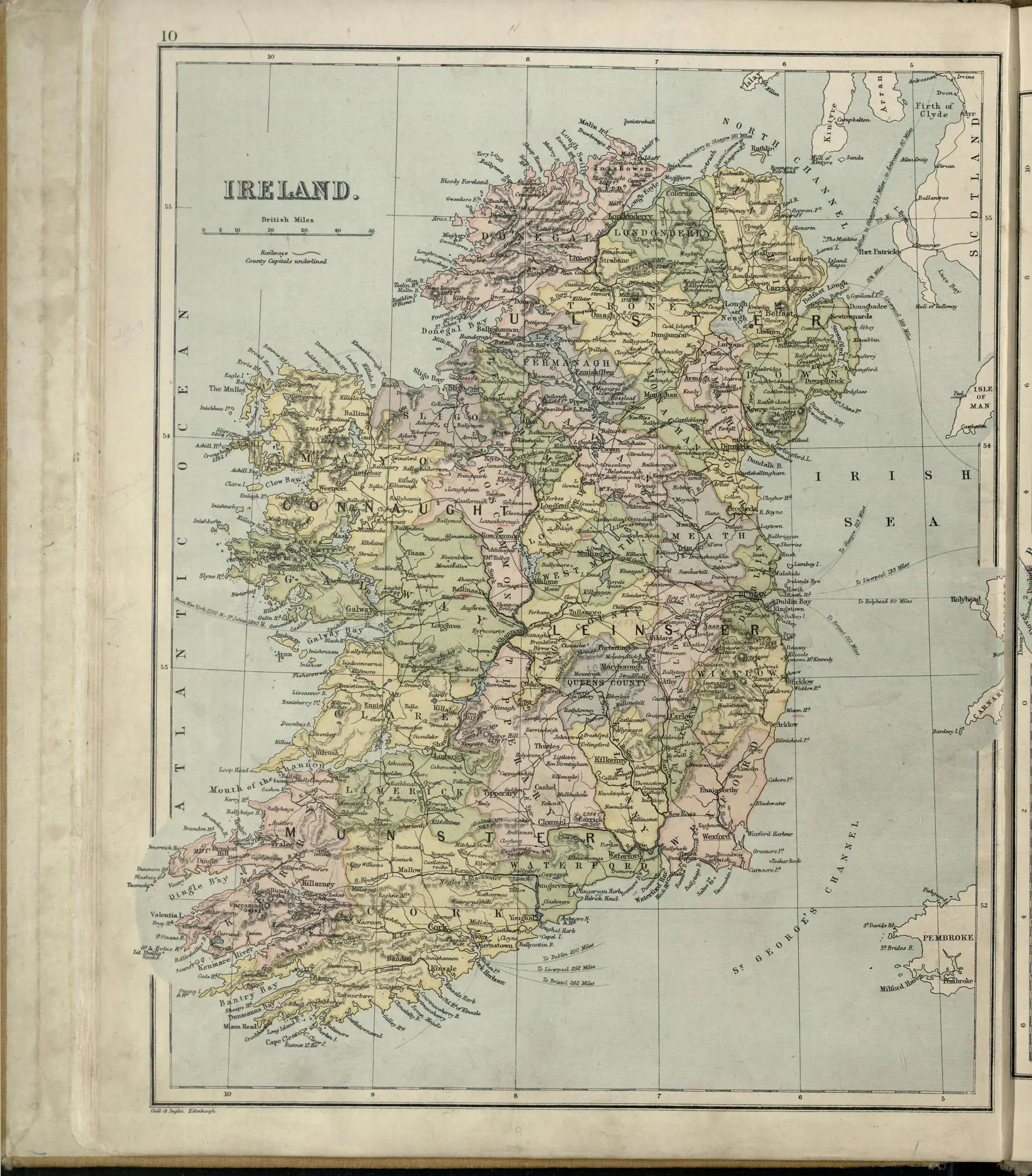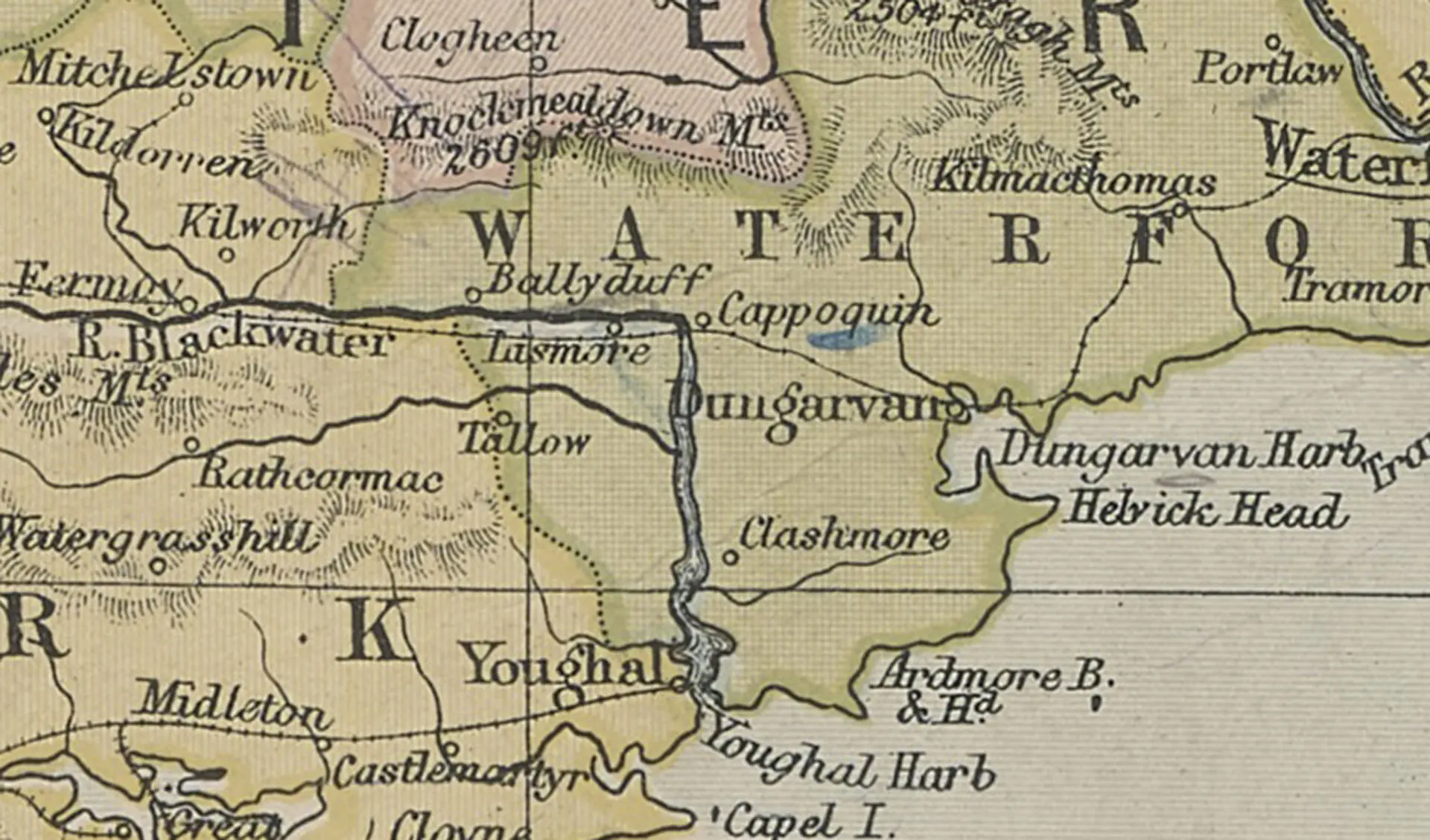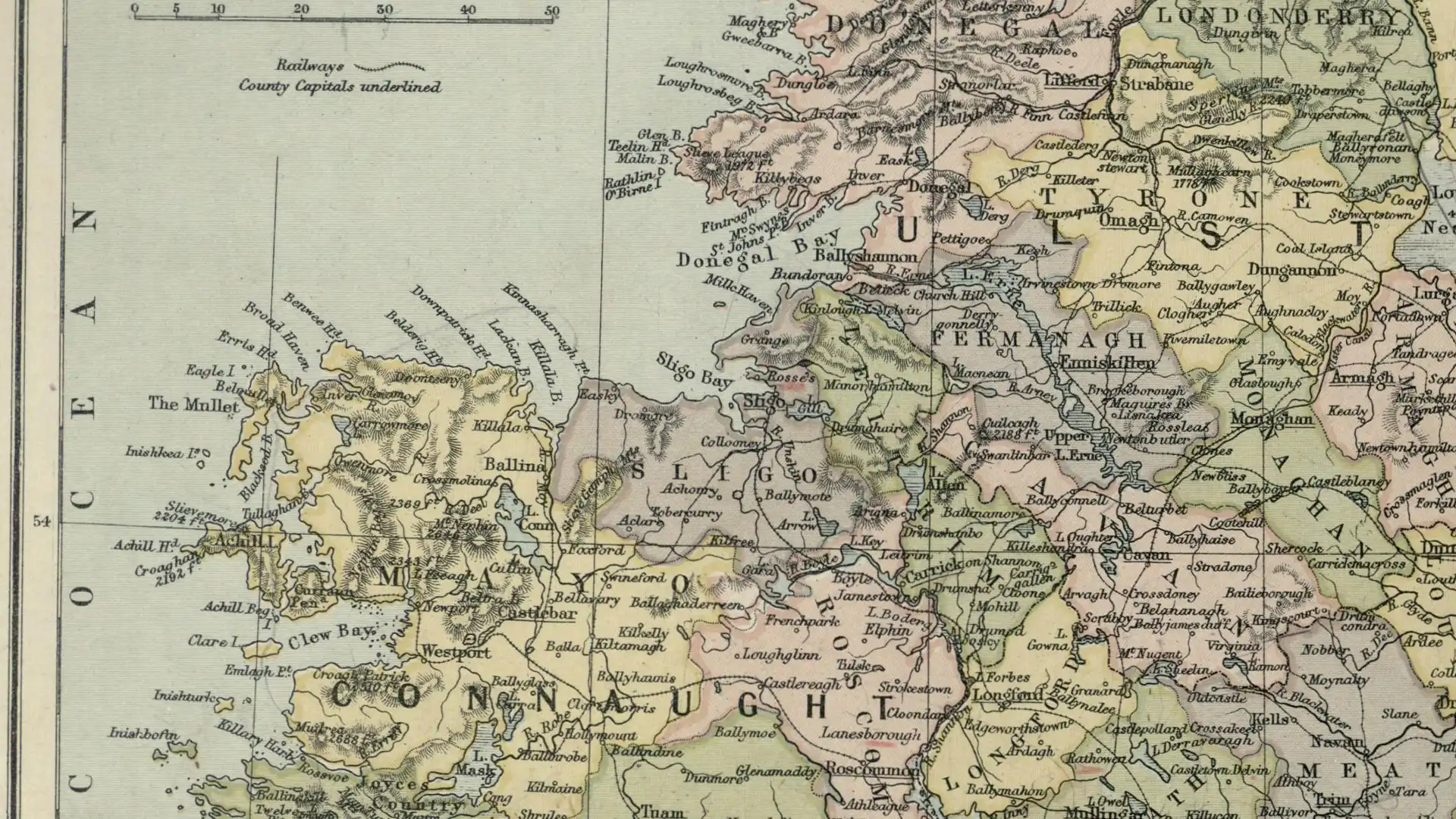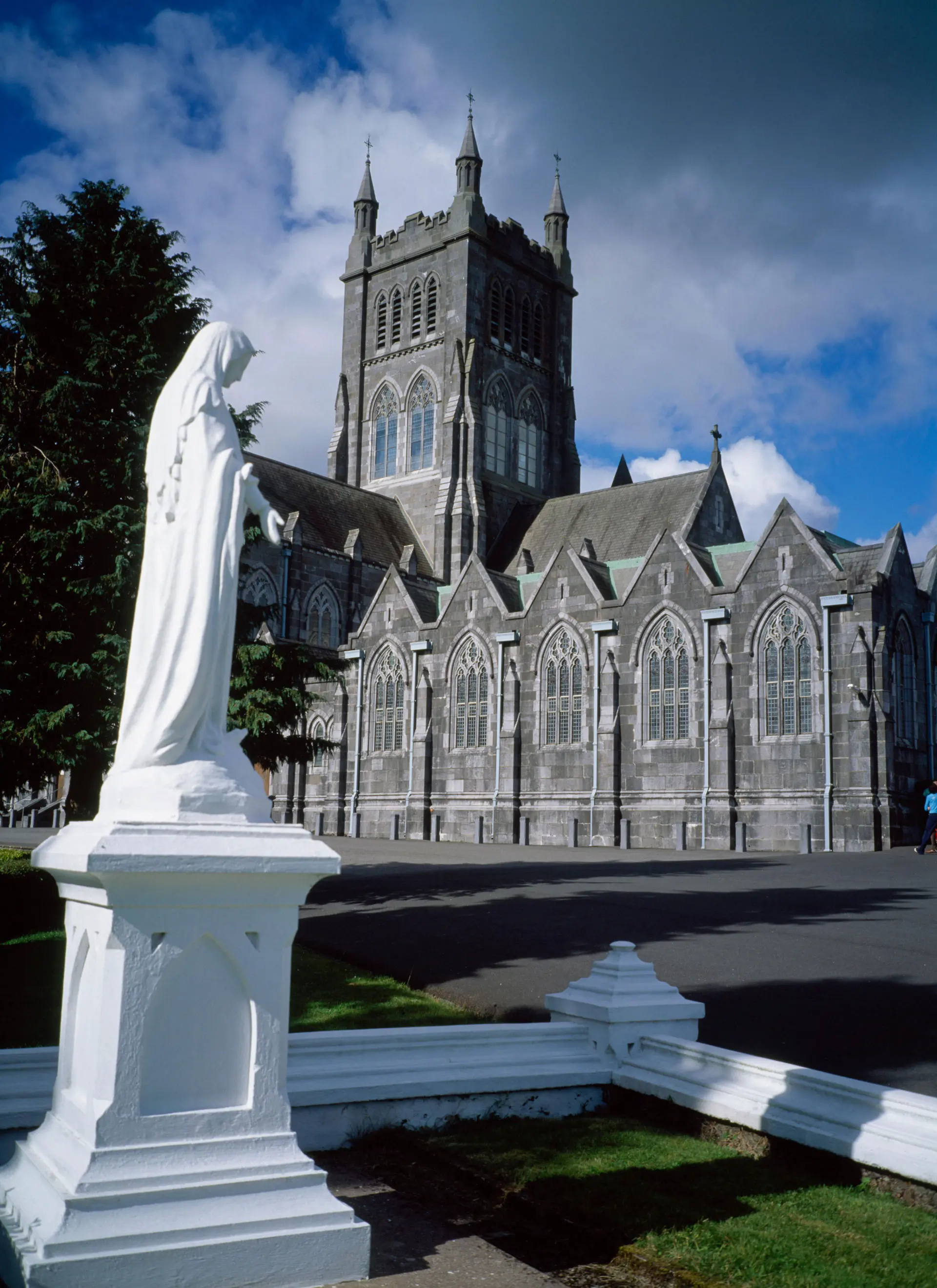The Marks
Cappoquin is also very much present by implication in The Dead, Joyce’s great novella and the last story in The Dubliners. It is both the railway station for the ‘terrible’ Freddie Malins drying out trip to Mount Melleray and where the griefstruck heroine of The Lass of Armagh comes from (in many versions).
The Texts
Penelope
‘I got him excited he crushed all the flowers on my bosom he brought me he couldnt count the pesetas and the perragordas till I taught him Cappoquin he came from he said on the black water but it was too short then the day before he left May yes it was May when the infant king of Spain was born Im always like that in the spring Id like a new fellow every year up on the tiptop under the rockgun near OHaras tower’
The Dead
‘’Mrs. Malins, who had been silent all through the supper, said that her son was going down to Mount Melleray in a week or so. The table then spoke of Mount Melleray, how bracing the air was down there, how hospitable the monks were and how they never asked for a penny-piece from their guests.
“And do you mean to say,” asked Mr. Browne incredulously, “that a chap can go down there and put up there as if it were a hotel and live on the fat of the land and then come away without paying anything?”
“O, most people give some donation to the monastery when they leave.” said Mary Jane.4
Gabriel had not gone to the door with the others. He was in a dark part of the hall gazing up the staircase. A woman was standing near the top of the first flight, in the shadow also. He could not see her face but he could see the terra-cotta and salmon-pink panels of her skirt which the shadow made appear black and white. It was his wife. She was leaning on the banisters, listening to something. Gabriel was surprised at her stillness and strained his ear to listen also. . . . . He stood still in the gloom of the hall, trying to catch the air that the voice was singing and gazing up at his wife. There was grace and mystery in her attitude as if she were a symbol of something. He asked himself what is a woman standing on the stairs in the shadow, listening to distant music, a symbol of. . . . . If he were a painter he would paint her in that attitude. Distant Music he would call the picture if he were a painter.
The hall-door was closed; and Aunt Kate, Aunt Julia and Mary Jane came down the hall, still laughing.
“Well, isn’t Freddy terrible?” said Mary Jane. “He’s really terrible.”
Gabriel said nothing but pointed up the stairs towards where his wife was standing. Now that the hall-door was closed the voice and the piano could be heard more clearly. Gabriel held up his hand for them to be silent. The song seemed to be in the old Irish tonality and the singer seemed uncertain both of his words and of his voice. The voice, made plaintive by distance and by the singer’s hoarseness, faintly illuminated the cadence of the air with words expressing grief:
- ‘O, the rain falls on my heavy locks
- And the dew wets my skin,
- My babe lies cold . . .’
………………..
Gabriel watched his wife, who did not join in the conversation. She was standing right under the dusty fanlight and the flame of the gas lit up the rich bronze of her hair, which he had seen her drying at the fire a few days before. She was in the same attitude and seemed unaware of the talk about her. At last she turned towards them and Gabriel saw that there was colour on her cheeks and that her eyes were shining. A sudden tide of joy went leaping out of his heart.
“Mr. D’Arcy,” she said, “what is the name of that song you were singing?”
“It’s called The Lass of Aughrim,” said Mr. D’Arcy, “but I couldn’t remember it properly. Why? Do you know it?”
“The Lass of Aughrim,” she repeated. “I couldn’t think of the name.”
Discussion
In Ulysses, Cappoquin is where Molly’s first lover came from. Leopold Bloom may be resigned to abnegation as far as Molly’s adultery is concerned but like Joyce with Nora he remains concerned about who her first lover was.
The marks on Plate 10 are also a good candidate to be considered as the subject of the “have you found that place on the map?” letter (Section 7 above). One possibility is that the place was Cappoquin and when duly found it was marked in blue crayon rather than red like the other towns.
Another, perhaps more likely, subject of a search could be the town of Ross, recalled in the traditional song The Croppy Boy, which provides one of the lyrical threads in Ulysses:
“At the siege of Ross did my father fall
And at Gorey my loving brothers all”
The problem here is that Ross in Ireland is nowhere to be found in the Index of the Sandycove Atlas. Instead it is indexed as New Ross, as the town was renamed after being the site of the bloodiest battle of the 1798 Rebellion. The small seaside resort of Rosses is not indexed either, but that is because the Index was not updated for new editions of the Atlas.
Nora, from Galway, may well have known of Rosses, also on the West Coast. But it was clearly not the Ross that she and Joyce may have been looking for,
